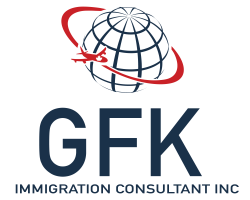
Canada Increases 2025 Immigration Quota For 4 Provinces
In a surprising turn of events amid Canada’s ongoing immigration recalibration, Immigration, Refugees and Citizenship Canada (IRCC) has boosted the 2025 Provincial Nominee Program (PNP) allocations for four key provinces
This move signals a potential softening in the federal government’s aggressive cuts to overall newcomer targets, which is positive news for aspiring immigrants.
As Canada grapples with labour shortages in critical sectors like healthcare, agriculture, and skilled trades, these quota hikes could inject fresh momentum into regional economies.
The federal government’s 2025-2027 Immigration Levels Plan, unveiled in late 2024, slashed permanent resident admissions to 395,000—a 20% drop from the previous year’s 500,000 target.
The PNP, a cornerstone of economic immigration that allows provinces to nominate candidates tailored to local needs, bore the brunt of these reductions, with overall allocations halved from 110,000 to 55,000.
Provinces like Ontario and British Columbia saw their quotas slashed without reprieve, sparking outcry from business leaders and immigration advocates.
As applications flood in and processing ramps up, the big question lingers: Will powerhouse provinces like Ontario, British Columbia, and Manitoba—home to over half of Canada’s population—push for similar boosts?
In this in-depth analysis, we break down the quota increases, their ripple effects, and a political chess game that could reshape Canada’s immigration landscape for years to come.
Table of Contents
The Federal Backdrop: From Boom to Measured Growth
Canada’s immigration story over the past decade has been one of unbridled ambition.
From 2015 to 2023, the country welcomed record numbers of newcomers, fueling GDP growth averaging 2.5% annually and filling gaps in an aging workforce.
The PNP emerged as a hero in this narrative, accounting for nearly 25% of all economic immigrants by 2024.
Provinces, acting as sovereign selectors, tailored streams for everything from tech wizards in Vancouver to fish harvesters in Halifax.
But cracks appeared. Rapid influxes strained housing markets—and public services, leading to a backlash.
Enter the 2025 Levels Plan: a pivot to sustainability, prioritizing in-Canada experience (now mandated for 75% of PNP nominees) and capping temporary residents at 673,650.
Initial PNP cuts hit hard. Yet, as summer 2025 unfolded, negotiations heated up.
The result? Targeted top-ups, announced piecemeal from February to September.
These aren’t blanket reversals; they’re strategic.
For immigrants, it’s a lifeline: faster processing, more invitation-to-apply (ITA) draws, and clearer paths to citizenship.
Alberta’s Immigration Quota Increase For 2025
Alberta, the oil-rich Prairie giant, was among the hardest hit by the initial cuts.
In November 2024, IRCC sliced the Alberta Advantage Immigration Program (AAIP) quota in half, a blow to a province already reeling from energy sector volatility.
Calgary’s unemployment hovered at 7.1% in early 2025, and rural areas cried out for mechanics, welders, and nurses.
Fast-forward to September 2025: IRCC greenlit an additional 1,528 nominations, elevating Alberta’s total to 6,403—a 31% rebound from the nadir.
The province had already issued 3,749 nominations by mid-September, leaving 1,126 spots and 1,768 applications in the queue.
What fueled this turnaround? Alberta’s aggressive advocacy. The province submitted a 200-page dossier in May, highlighting 45,000 job vacancies in construction and energy alone.
Economically, the impact is profound. Immigrants contribute $2.5 billion annually to Alberta’s GDP via consumption and taxes, per a 2024 Conference Board of Canada report.
With quotas restored, expect a surge in family reunifications—AAIP’s Rural Renewal Stream prioritizes spouses and children—bolstering community vitality in places like Red Deer and Grande Prairie.
Alberta must enforce the 75% in-Canada rule, weeding out overseas applicants. And housing?
The province pledged 10,000 new units by 2026, tied to this quota. Failure could trigger clawbacks.
| AAIP 2025 Snapshot | Details |
|---|---|
| Issued to Date | 3,749 |
| Remaining Spots | 1,126 |
| Applications Pending | 1,768 |
Saskatchewan’s Immigration Quota Increase
Saskatchewan, Canada’s breadbasket, knows hunger—not just for food, but talent.
With vast farmlands spanning 65 million acres and a burgeoning potash industry, the province faced a perfect storm: a 50% quota cut for 2025, dropping the Saskatchewan Immigrant Nominee Program (SINP) to 3,625 from 7,500.
Enter August 2025’s lifeline: a 1,136-nomination boost, totaling 4,761.
The allocation cleverly segments: 25% (284 spots) revives processing for capped sectors like trucking, hospitality, food services, and retail—industries that hit limits in June, forcing application returns.
The remaining 75% (897 spots) targets uncapped areas, with lasers on healthcare (nurses for Regina’s hospitals), agriculture (dairy experts for Saskatoon’s co-ops), and skilled trades (electricians for mine expansions).
This follows a federal mandate for 75% in-Canada nominees, favoring those already contributing via work permits.
Immigrants already make up 15% of the workforce, driving $1.8 billion in exports. The boost could add 2,000 indirect jobs, per provincial modeling.
Critics worry about integration. Rural isolation affects 20% of newcomers, per SINP stats.
The province counters with enhanced settlement funds: $15,000 per family for housing and language classes.
This targeted model could inspire others, blending equity with efficiency.
Newfoundland and Labrador Immigration Quota Increase
In the rugged embrace of the Atlantic, Newfoundland and Labrador has long punched above its weight in immigration.
The province’s economy hinges on fisheries, offshore oil, and emerging green energy.
The January 2025 cut—from 2,050 PNP spots to 1,025—threatened to stall this momentum.
February’s negotiation yielded gold: 1,000 extra PNP nominations, restoring capacity to 2,025.
Layer on 500 Atlantic Immigration Program (AIP) slots (up from 475), and the total swells to 2,525—a near-doubling.
The Newfoundland and Labrador Provincial Nominee Program (NLPNP) now hums with activity.
Priority: International Graduates (for Memorial University’s 4,000 foreign alumni) and Skilled Worker streams for oil rig engineers.
Economically, it’s a boon. Newcomers added $450 million to GDP in 2024, per provincial data.
For applicants, AIP’s employer-driven model shines: designated jobs guarantee interviews.
NLPNP mandates six-month job offers, with settlement support via $10,000 grants.
New Brunswick Immigration Quota Increase
New Brunswick, the picture province, mirrored its neighbor’s success in June 2025.
Facing a halved PNP quota (from 3,000 to 1,500), Premier Susan Holt’s team struck a deal: 1,500 additional spots, totaling 3,000 for PNP.
Add 1,250 AIP allocations, and it’s 4,250 newcomers— a 42% uplift.
This “grand bargain” included relocating 400 asylum claimants over two years, easing federal pressures.
The New Brunswick Provincial Nominee Program (NBPNP) prioritizes Express Entry and Critical Worker Pilot streams.
Impact? Projected $600 million GDP lift, per IRCC estimates. Immigrants, 12% of the population, drive 20% of new businesses.
| NBPNP 2025 Overview | Total | Notes |
|---|---|---|
| PNP Allocation | 3,000 | +1,500 increase |
| Sectors | IT, Forestry, Healthcare | 75% In-Canada |
Will Ontario, British Columbia, and Manitoba Follow?
As the ink dries on these four provincial pacts, a high-stakes diplomatic drama unfolds in Ottawa’s marbled halls.
Ontario, British Columbia (BC), and Manitoba—the “Big Three” with combined PNP quotas of 19,500 for 2025—watch enviously.
Their allocations: Ontario’s 10,750 (halved from 21,500), BC’s 4,000 (from 8,000), Manitoba’s 4,750 (from 9,500).
No increases yet, despite pleas.
Ontario Premier Doug Ford has publicly criticized federal immigration policies—e.g., in July 2025, he advocated for greater provincial control over work permits for asylum seekers and economic immigrants to address labor gaps
However, he then backed down on his statement.
Similarly, B.C. was in alignment with Ford’s emotion, but with rising anti-immigration sentiment across Canada, they are proceeding cautiously.
Manitoba has been seen on the front foot to make adjustments to immigration streams as well as supporting those who already have applications under processing.
Ontario and B.C. might not ask for an increase in the quota by being politically cautious, but Manitoba may ask for a quota increase following that Alberta got new allocations.
As 2025 closes, eyes turn to the next Levels Plan. Targets stabilize at 380,000 PRs; PNP at 60,000 for 2026.
For provinces, it’s about proof: Track retention (aim 85%) and wage growth (10% post-PR).
For temporary residents in Canada looking to transition to permanent residents, tailor to provinces’ needs.
Canada’s quota quest underscores its ethos: A nation built by newcomers, forever adapting.
With recent increases to Alberta and Saskatchewan, the door cracks wider—inviting not just workers, but futures.
